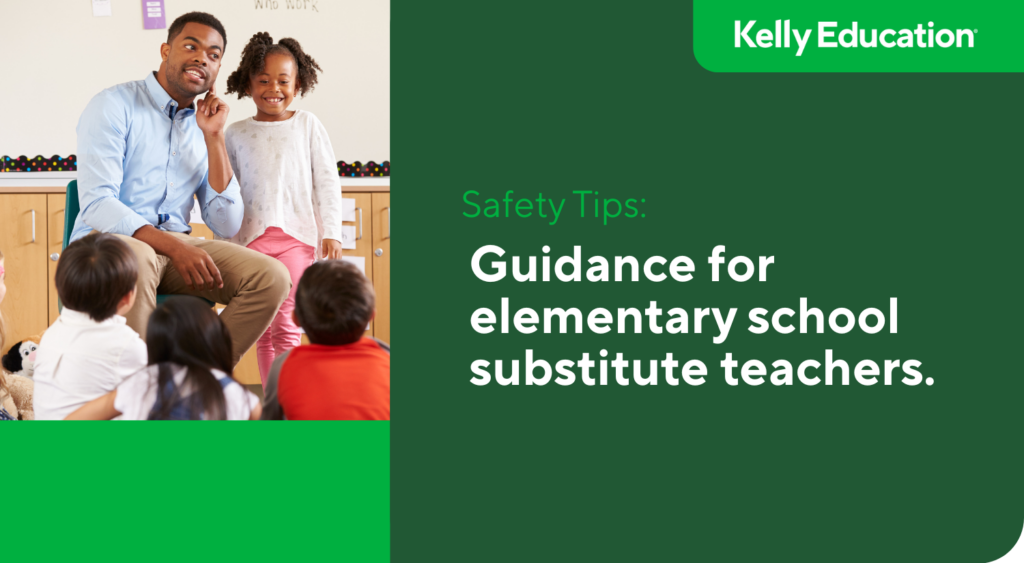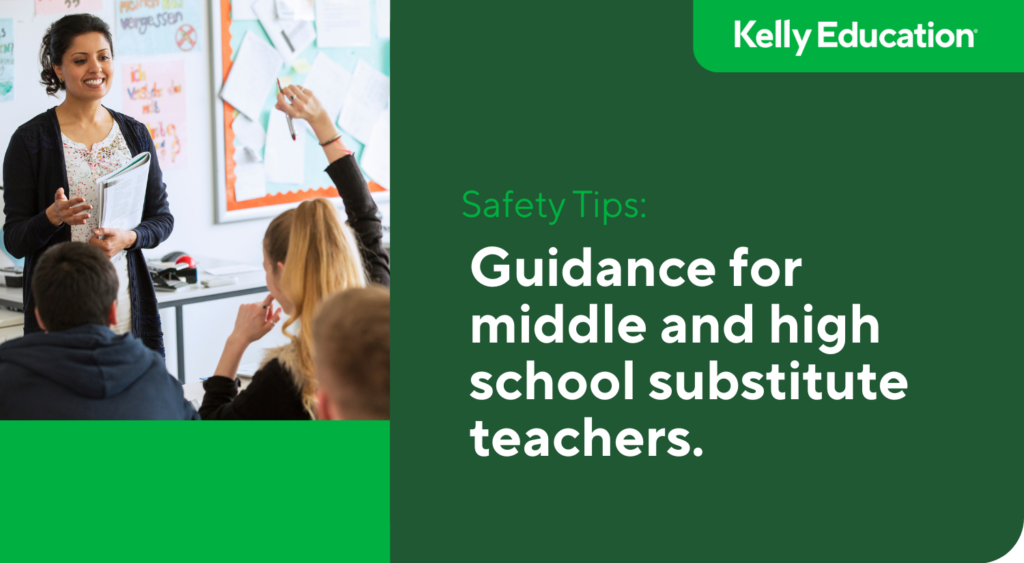Pro tips for substitute teaching in high school.

Ready to step out of your comfort zone to be a high school substitute teacher? It’s natural to feel a bit nervous—teaching subjects like trigonometry, world history, gym, or music can seem overwhelming to anyone.
Don’t worry. No one expects you to be an expert in every subject. You’ve been trained to be an effective substitute teacher at all grade levels. Here are few high school substitute teacher tips:
High school student mindset.
Once you’re okay with knowing that you don’t have to be a subject matter expert to substitute teach high school students when a teacher calls out for a day or two. The next most common concern is about teaching teenagers.
Teenagers have been through middle school and are already familiar with the schedule of moving classes throughout the day. They have a stronger sense of who they are as individuals and, when engaged, can have meaningful conversations.
Keep in mind that teenagers are at varying points of development and maturity, even if they’re the same age. They all still benefit from strong role models to inspire and connect with them. They need mentors to believe in them as they transition to adulthood and help them pursue all the ideas they want to explore.
Your responsibilities.
As a high school substitute teacher, know that many substitute teacher duties are common across all grade levels. For example, you’ll always take attendance, manage the classroom, deliver the lesson plans, and provide a wrap-up note for the teacher. So, go ahead and take the math or physics classroom assignment that might make yo a little nervous.
Lesson plans. Your job is to facilitate the plan the teacher left for you. If the teacher doesn’t leave you with a lesson plan, always check first with the department chair or an administrator. They will likely have some guidance.
Back-up activities. Bring a few backup activities to keep the students engaged if the lesson runs short. We’ve compiled a few ideas for middle and high school classrooms.
Pro tip: If you don’t know the answer to questions, don’t pretend to know. Have the students work together in groups or ask a more advanced student to help.
Leave a report. At the end of the day, don’t forget to leave that note for the teacher about how far you got with the lesson plans, questions you had, and any issues or praise about the students.
High school substitute teacher tips for arrival.
- Go to the office. Pick up your day’s schedule and a map that details the school’s layout. Confirm where the restrooms and teacher’s lounge are located.
- Find out when to take lunch and who is a helpful teacher to go to if you have any questions.
- Ask about emergency protocol. Get the office phone number if an incident occurs, a question arises, or you need support.
Start class right.
High school students know the drill when it comes to substitute teachers. You need to get a quick read on the class and set the tone immediately.
Introduction. Introduce yourself with authority and set expectations for the period. Begin by addressing the class with a confident greeting, and then write your name down on the board. Provide a brief background about yourself, take attendance, then get into the lesson plan.
Seating charts. Follow established seating charts to keep as much routine as possible.
Understand accommodations. Some students might have an IEP or 504 plan. If this is shared with you by the teacher, make the accommodations as indicated (and required by law).
Engaging students as a high school substitute teacher.
Be approachable and try to cultivate a classroom environment where students feel comfortable sharing.
- Generate discussion by asking open-ended questions. This is particularly important at the high school level.
- Connect the lesson to the real world with relevant news stories.
- Allow five minutes at the end of the lesson for students to write a paragraph or two reflecting on what they learned that class period.
- Maintain a professional demeanor. Students will likely use slang or casual language, but as an educator, you still need to be professional even when you’re trying to be relatable.
As a high school substitute teacher, you have the power to inspire students, even if you don’t feel like an expert in every subject. By fostering collaboration, offering encouragement, and embracing the challenge with confidence, you’ll create a meaningful learning experience. Believe in your ability to make a difference—your presence matters, and you can positively impact students’ lives, one class at a time.
Get more high school substitute teacher tips.
Need more guidance? Kelly Education has an entire library of tips for high school teachers. Here are just a few to get you started:
- substitute teacher dress codes
- how to introduce yourself to the class
- tackling 9 core and elective subjects as a substitute teacher
Want to become a substitute teacher? Fill out our brief interest form, and one of our recruiters will contact you. We’re excited to answer your questions and share more about opportunities to become a substitute teacher with one of our school district partners.
View Related: Article Workplace culture
You might like
Find your next job
Discover thousands of temporary, full-time, and remote jobs for beginning and experienced job seekers.



